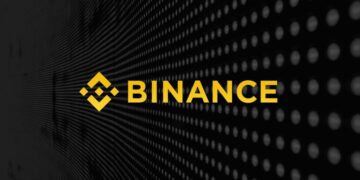Decentralized blockchain expertise has been round for a comparatively brief time frame, within the grand scheme of issues, however its decentralized nature has the ability to maintain knowledge and knowledge out of the palms of censors seeking to create a “secure” and “faultless” model of historical past.
Blockchain is permissionless and actually owned by nobody. So, whereas we are able to’t save the Alexandria libraries of the previous, we are able to ensure that the longer term is properly geared up with the instruments essential to protect historic information.
Right here we’ll have a look at among the methods nonfungible tokens (NFT) and blockchain expertise have been used for retaining archives, the potential downfalls of such expertise, and what the longer term holds for blockchain-based storage programs.
NFTs and archives
Whereas many present use circumstances surrounding NFTs take care of digital artwork, there may be one other aspect of nonfungible tokens that has solely began to be explored.
Preserving an archive could be a pricey and time-consuming endeavor, however NFTs can function a type of fundraising to help archival growth.
For instance, designer Paco Rabanne is promoting NFTs to fund his bodily archive and help his model identify.
Moreover, the expertise itself can be utilized as means to retailer data.
Archangel, a check undertaking of a “trusted archive of digital public information” on the Unversity of Surrey, has accomplished simply that. From 2017 to 2019, the college was in a position to create a check blockchain archive storage system that used distributed ledger expertise (DLT) and NFTs and shifted “from an institutional underscoring of belief to a technological underscoring of belief.”
Cointelegraph reached out to Foteini Valeonti, a analysis fellow at College Faculty London and founding father of USEUM Collectibles — a company advising museums, policymakers and cultural organizations on NFTs — to speak in regards to the function of blockchain and NFTs in archives.
Valeonti stated that blockchain expertise could be a approach for museums to “leverage their inherent capability for provenance and metadata consolidation. In order that, lastly, every museum exhibit will solely have one distinctive identifier throughout totally different establishments, initiatives and every kind of various data programs.” It may very well be a approach to monitor which museum owns what and who had it final.
Final 12 months, the household of the Pastime Foyer empire was discovered to have hoarded 17,000 historic Iraqi artifacts looted in the course of the battle. This breach of safety of historic artifacts exhibits that in instances of battle and instability, the proper (or mistaken) particular person can come and steal prized items of cultural identification.
The next difficulties in repatriating the stolen artifacts spotlight the issue of how cultural objects are sometimes poorly cataloged. Valeonti added:
“Preserving distinctive knowledge for provenance’s sake might assist resolve quite a few data science challenges that the cultural heritage sector is presently dealing with.”
Preserving information of battle
Digital media is susceptible to propaganda that goals to shift blame and declare that sure occasions both occurred or didn’t, whereas individuals fall right into a rabbit gap of fixed misinformation within the propogandists’ try to invalidate the expertise of these dwelling in war-torn areas.
Within the case of the present battle in Ukraine, there was an enormous shift in the way in which crypto and blockchain can be utilized to assist protect Ukrainian tradition and report individuals’s experiences of the battle.
The Meta Historical past Museum is one decentralized undertaking that’s retaining real-time information of occasions from the continuing battle. First, they promote NFTs to lift cash for battle funds by showcasing Ukrainian artists around the globe. Then, the cash is used not solely to fund knowledge gathering but additionally to help Ukrainian forces. To this point, the Meta Historical past Museum has raised 270.37 Ether (ETH) or $611,953 on the time of writing.
The Meta Historical past Museum collects tweeted occasions corresponding to shellings or bombings from the battle from Ukrainian state officers and worldwide companies such because the North Atlantic Treaty Group or BBC Information as a “place to maintain the reminiscence of battle.” In help of the Meta Historical past Museum’s efforts, Ukrainian Vice Prime Minister Mykhailo Fedorov tweeted, “Whereas Russia makes use of tanks to destroy Ukraine, we depend on revolutionary blockchain tech.”

Stopping catastrophes
In wartime, it’s important to have programs in place to guard these in peril. Certainly one of these programs is the Hala Sentry system, designed to report immutable knowledge on Ethereum of situations of airstrike alarms, bomb threats and occasions that would result in the loss of life of hundreds and the destruction of total cities.
It does this by providing “an interface to knowledge from its sensors, human observers, and strategic companions, together with data from open media.” Whereas this does have a side of utilizing automated programs to report wartime historical past, this makes the info and airstrike information immutable. Folks can test and see what is occurring at any given second, even when information channels or individuals are blocking details about sure occasions.
The undertaking has had an affordable quantity of success, too, because the Hala Sentry system said that “in accordance with a preliminary evaluation, the system diminished the lethality of airstrikes by round 20–30 p.c in areas below heavy bombardment in 2018.”
Is there a draw back?
As a nascent expertise, blockchain tech nonetheless suffers from some rising pains when it comes to growth (scalability is a significant drawback) in addition to laws surrounding the area.
As said by Valeonti, “NFT expertise continues to be in its infancy, particularly relating to record-keeping.” She added that proper now, many of the data that’s accessible for knowledge storage is saved partly in decentralized storages and partly in centralized servers. Archangel famous, “A centralized authority mannequin merely doubles down on an institutional foundation for belief.”
The difference of expertise and Web3 should increase onward to make sure that it could possibly deal with the sheer quantity of knowledge and knowledge that’s essential for decentralized archives to thrive. Blockchain is solely not there but, in accordance with Valeonti, and creating the tech must occur first earlier than trusting barely used expertise with priceless data.
Along with belief, one other side that places blockchain expertise at an obstacle is extra anthropologically pushed primarily as a result of copyright claims on artifacts maintain a powerful cultural presence over a museum’s use of an artifact.
According to a publication by the World Mental Property Group, “Cultural establishments, together with museums, libraries and archives, play a useful function within the preservation, safeguarding and promotion of collections of indigenous and conventional cultures, corresponding to artifacts, images, sound recordings, movies and manuscripts, amongst others, which doc communities’ lives, cultural practices and information programs.”
It’s the job of those establishments, first, to guard the artifacts as a result of it doesn’t belong to them, and second, “for the gathering establishment, membership information, Web monitoring knowledge and different actions that collect private details about patrons should be managed in line with privateness legislative necessities,” in addition to uphold a personal settlement with the events concerned in any sense.
For instance, the Nationwide Museum of the American Indian in Sutherland, Maryland presents personal excursions of its artifact collections however solely showcases artifacts authorised by the Native American tribes that permit the museum to retailer their individuals’s historical past.
Valeonti said that “a decentralized storage resolution that might routinely make all photos and property brazenly accessible to all wouldn’t be an possibility for the overwhelming majority of museums, which have restrictive copyright insurance policies both as a result of there are different entities — e.g., artist estates — holding copyright onto their artifacts or as a result of they’re unable to make their artifacts accessible in open entry — e.g., can not afford to lose picture licensing income.”
One other concern with utilizing a blockchain-based decentralized storage system is one which many crypto hodlers can relate to: defending personal keys. Valeonti defined {that a} “essential barrier, for my part, is the inherent inflexibility of blockchain expertise.”
“Until one makes use of a centralized, custodial platform, if somebody loses their passphrase, then all their property are misplaced without end.”
As such, who will get to regulate the seed phrase? Who can be liable for ensuring the seed phrase is in the proper palms? Valeonti additional talked about that “there was analysis proposing potential options, however it might be some time earlier than we see such innovations deployed reside on main blockchains.”
repair this for the higher
Nonetheless troublesome the appliance may very well be, there are concrete methods to make use of blockchain, DLT and NFTs to guard knowledge and archives.
Valeonti urged, “What museums can do is to take a component in these discussions and assist form the way forward for Web3.” She additionally stated that cultural organizations ought to be on the forefront of the longer term — as expertise modifications, the world of archive storage and museum information should change with it.
Valeoti and her colleagues at UCL are exploring these challenges of “robustness of decentralized storage, metadata consolidation and off-chain metadata permanence” with a nationwide museum in the UK. It’s a nice instance of blockchain and museums coming collectively to vary how they use and make use of archives.












![Why Ethereum [ETH] address outflows may be headed for DeFi](https://cryptonoiz.com/wp-content/uploads/2023/03/AMBCrypto_An_image_of_a_stylized_Ethereum_logo_with_arrows_poin_22f2aeff-c7bb-4c7d-aec7-547a37a35e82-1-1000x600-360x180.jpg)

























